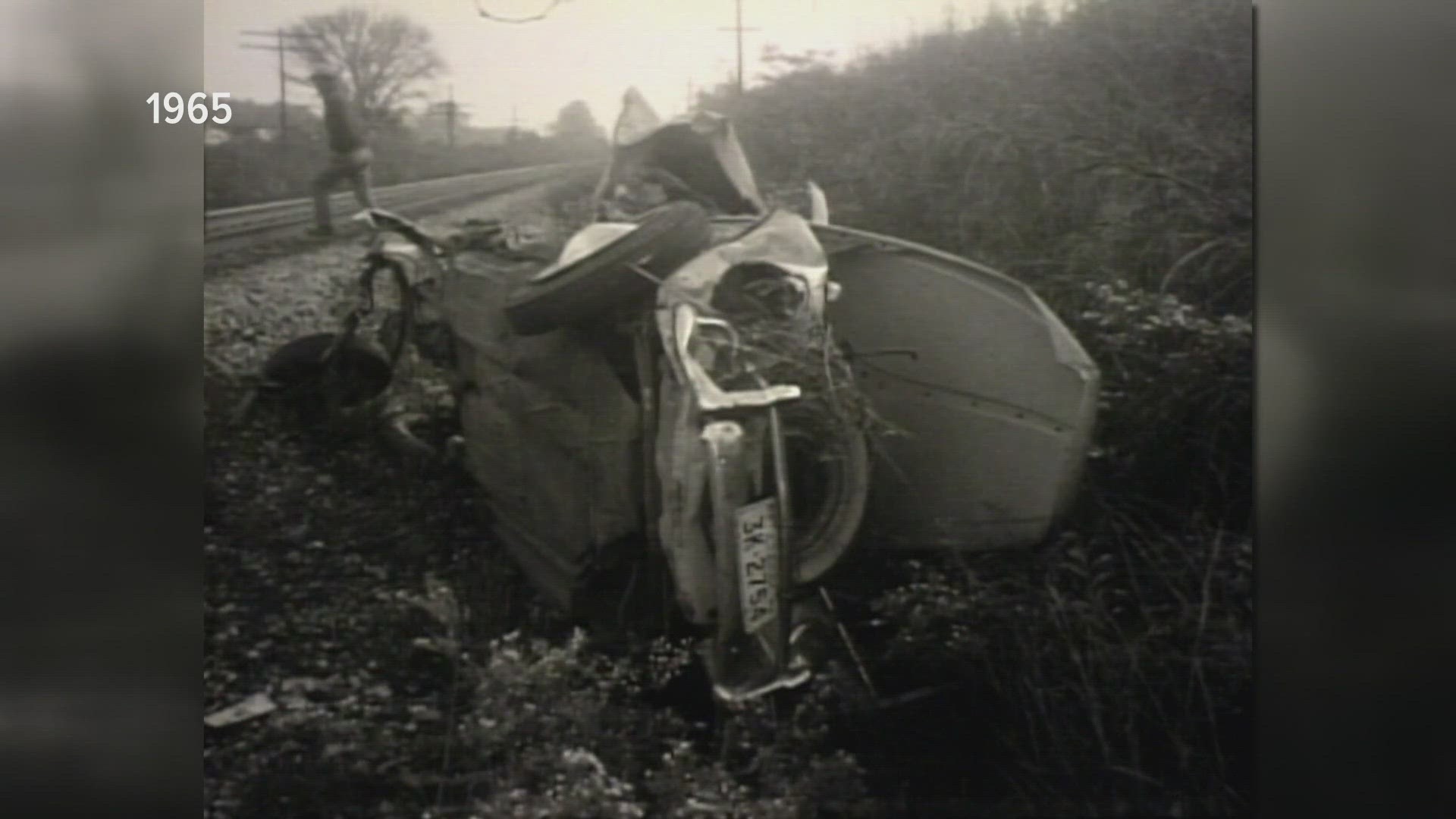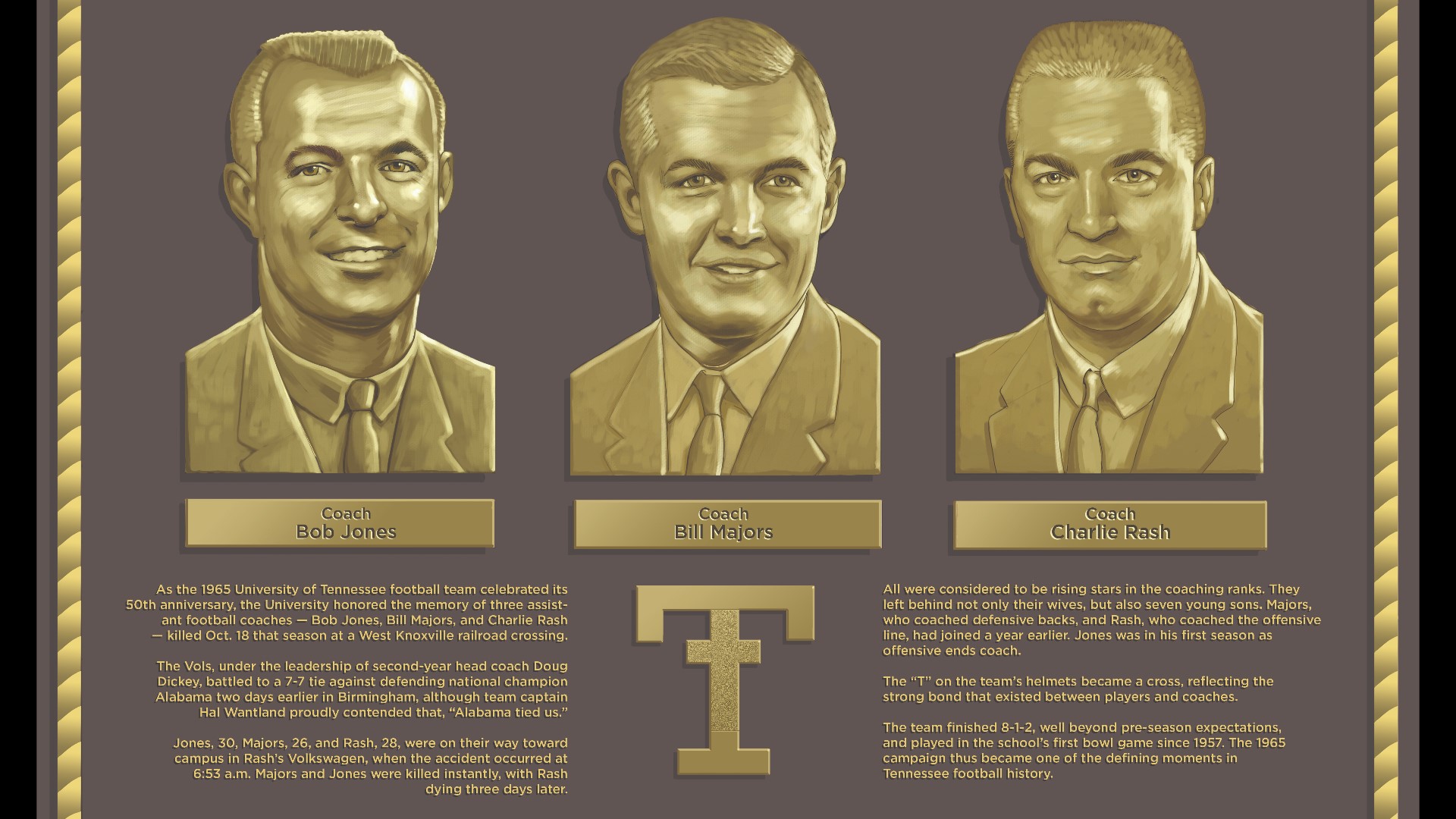KNOXVILLE, Tenn. — Drivers anxious to get to work zip across the West Knoxville rail line. Some hardly glance around as they cross.
Most surely don’t know what happened 58 years ago at this spot on Cessna Road and Westland Drive, one of the grimmest days in University of Tennessee history.
That’s when a Knoxville-bound passenger train t-boned three young assistant football coaches on Cessna heading to campus in a Volkswagen Beetle.
Against the train they had no chance. The Southern Railway "Tennessean" crushed the car like a beer can. It tossed it 96 feet down the tracks.
All that existed back then to warn victims Bob Jones, Bill Majors and Charlie Rash was a wooden railroad crossing sign. Today, in a neighborhood packed with homes, there are flashing lights but no gate to alert when a train is approaching.
Some neighbors tell WBIR they worry about the crossing. This summer one contacted 10News and a Knox County commissioner seeking change.

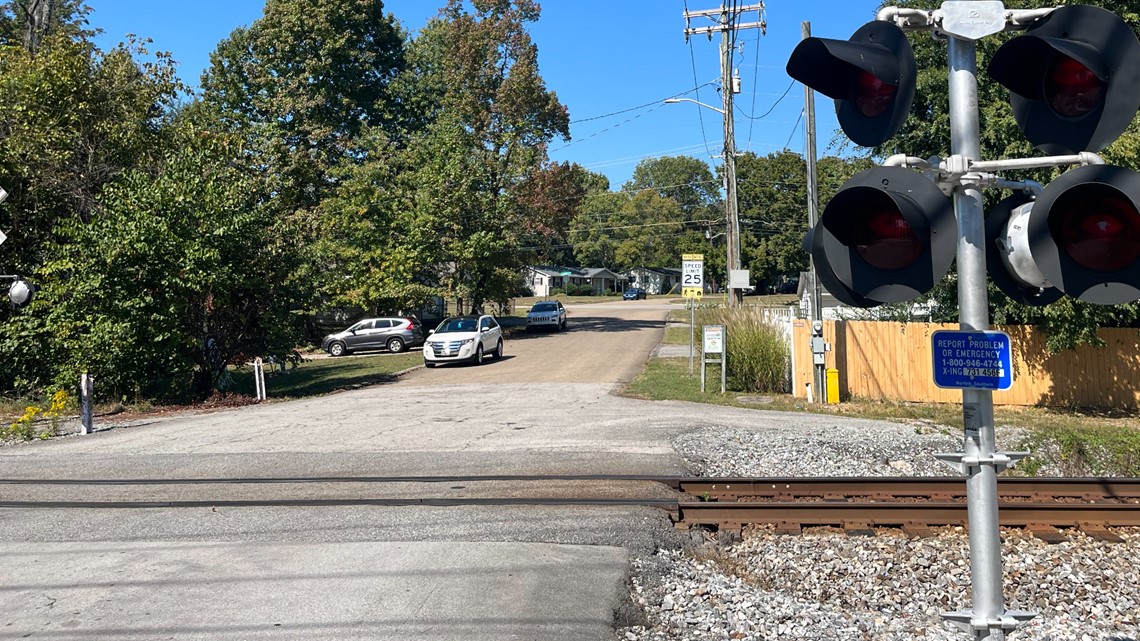
As a result, the city of Knoxville has decided to make improvements.
It has no plans to put in a crossing gate. But it will add signage, pavement markings and stop lines by the end of the month, said Karen McKeehan, the city's transportation engineering chief.
Because of what happened Oct. 18, 1965, three wives became widows and seven boys lost their daddies.
"If you look at this stretch of road, you have two or three other crossings that have gates, literally right down the road here, and this one doesn't," said Knox County Commissioner Larsen Jay, standing at the scene.
"And, of course, this is the scene of a really tragic accident long, long ago. But it's an area that everybody continues to have more concerns about because the traffic continues to grow, the population continues to grow, and the railroad's not going anywhere."
Maybe Jones, Majors and Rash will be the last lives lost at Cessna and Westland.


"IT CAN'T BE TRUE"
The week was supposed to be a happy one. Everyone was happy, until the train crash.
UT's football team had just tied Alabama 7-7 two days before in Birmingham, a moral victory for a Vols squad on its way to better days after several mediocre to just plain bad years.
As he had many mornings before, Rash set out early that Monday to pick up first Jones from his Deane Hill apartments home on Gleason Drive and then Majors, who lived not far away on Cessna.
Rash, 28, a Missouri native, coached the offensive line; Majors, 26, a Tennessee native son, UT alum and brother of UT legend John Majors, handled defensive backs; and Jones, 30, a Texas native who coached offensive ends.
Majors said goodbye to his family in the Cessna Road rancher and climbed into the Beetle.
Rash put the compact in gear and headed down the hill the short distance to Westland. Campus sat about 8 miles away.
Was Charlie in a hurry? We don't know. Did something distract him? We don't know.
He'd been bothered by kidney stones a few days before, longtime Vols historian Tom Mattingly told WBIR. Was that a factor in the crash? We don't know.

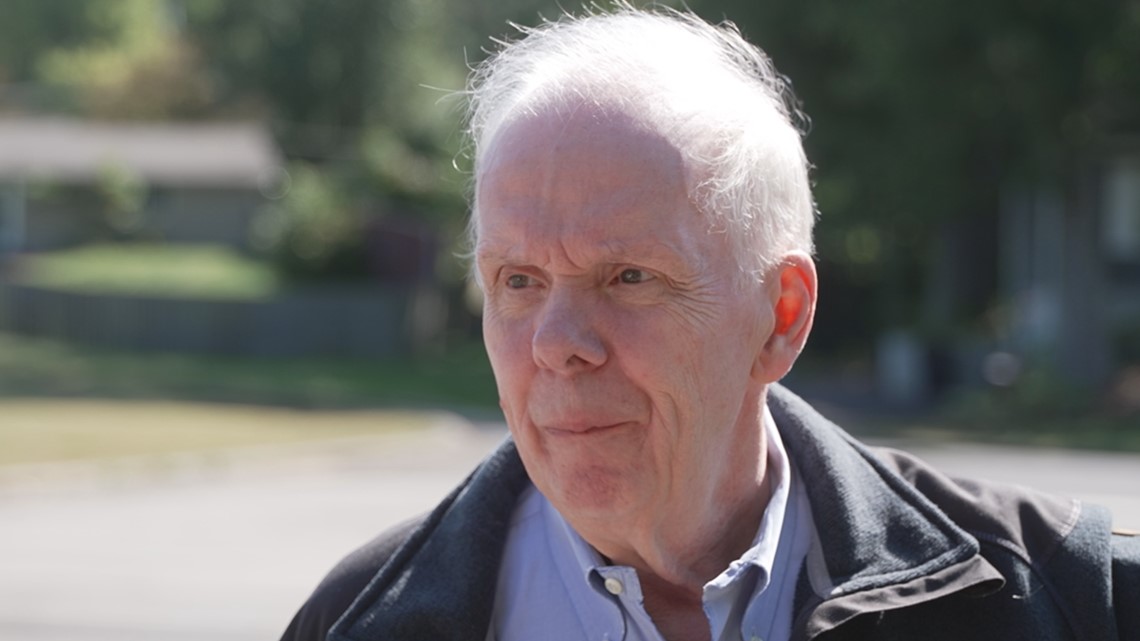
The violence of the collision makes clear Rash had no time to react to the oncoming locomotive.
The Southern engineer, who was running late, would later say he spotted the car on the tracks in the pre-dawn from about 500 feet away and threw on his brakes. Considering his speed, it made little difference.
The train slammed into the right side of the Volkswagen, separating the rear engine from the rest of the German car. Jones and Majors died at impact; Rash suffered severe head injuries that required hours of surgery.
"You look at the picture of what the train did to the car," Mattingly said. "It hits me right here."
The car landed in a crumpled heap in a gulley on the south side of the tracks. The train came to a stop nearly a mile down the line.
Authorities later would find Jones' wristwatch in the wreckage. He'd gotten it while helping Baylor University beat UT in the 1957 Sugar Bowl.
The watch revealed to investigators the time of the crash: It had stopped at 6:53.

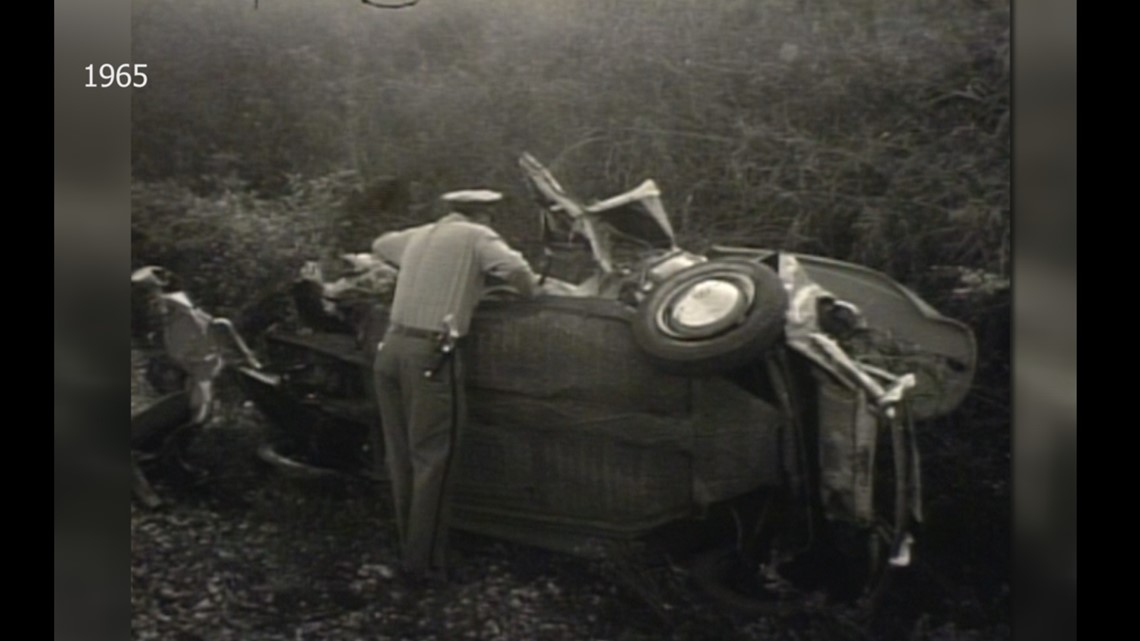
Back in 1965, the area still was rural. what they used to call the country. West Town Mall hadn't been built yet. THP hadn't yet built a regional headquarters on Kingston Pike and Buckingham Road.
The accident cast a profound pall over the UT community. A season that had started with such promise under second-year head coach Doug Dickey suffered a terrible blow.
"This can't be so!" the News Sentinel quoted Dickey as saying when informed. "It can't be true!"
"These fine, upstanding young men were known by many," Knoxville Mayor Leonard Rogers said in a televised statement. "They're involved, of course, in the football and athletic programs at the university. But more than that they are citizens of a Christian community, and I urge each one of our citizens to express their sympathy and Christian love and understanding during this period of tragedy for the families of these men."
Until Thursday of that week, the university wasn't even sure it would carry through with the upcoming home game against Houston. Rash died the following day in the Fort Sanders hospital.
A shell-shocked Tennessee did end up playing that Saturday. The band played the national anthem, followed by the hymn, "Abide With Me".
It wasn't a great game but the Vols got the job done 17-8 before 34,504 at Neyland Stadium.


NO-BRAINER
Thousands of homes have been built in the West Knoxville area since the crash, records show.
"Anybody who lived here back then would be surprised at what it looks like now," said Mattingly, who lives about a mile away.
Today, Cessna Road is a popular cut-through to and from Gleason for drivers to avoid busy Morrell Road a mile off to the east. More people likely know about the cut-through than know about the triple-fatal that occurred in 1965.
On any given work morning, commuters and work crews bounce across the tracks in and out of the subdivision entrance where the men died. Some vehicles stack up onto the tracks as they wait to turn left or right off Cessna.
The only warning in place for drivers at the Cessna crossing is a sign with lights that flash as a train approaches.
There's been at least one confirmed train-car crash at the site since 1965.
Federal Railroad Administration records show a 19-year-old female motorist was struck by a light locomotive and suffered injuries at the crossing the afternoon of Sept. 1, 2005.


This summer a neighbor approached WBIR about the largely unmarked and unprotected crossing, noting among other things that there were crossing gates at the train crossing at Westland and Gallaher View Road and Westland and Villa Crest Drive and a traffic overpass at Morrell above the train tracks.
But no crossing gate at Cessna.
Norfolk Southern Railroad owns and maintains the tracks. A railroad spokeswoman told WBIR the addition of safety equipment or signage at the site is up to the state or controlling municipality.
The neighbor also contacted Commissioner Jay, an at-large commissioner in his second term. He contacted county and city staff, learning that the crossing sits today inside the city of Knoxville.
"I had no idea of that tragedy until it was brought to my attention and what a horrific crash it was, and I hope it's never repeated," Jay said.


Karen McKeehan is the city's transportation engineering chief. She told WBIR the city, so far as she knows, hasn't received a formal complaint about the crossing, but the city is willing to make changes.
McKeehan said she checked with the state Department of Transportation about whether the crossing could qualify for federal funding that would cover the bulk of installation for a crossing arm. TDOT manages a program that funds improvements to rail crossings in the state.
"We were told, unfortunately, that it didn't meet the criteria based on the fact that it is a low-volume road," she said. "There haven't been any recent crashes involving that railroad crossing recently so we were told there will not be any federal money to address the crossing."
The most recent data shows there are about a thousand vehicles that pass over that crossing a day.
Without federal funding, it would cost the city about $350,000 to install crossing gates. That's not in the current city budget, McKeehan said.
The city, however, plans to add safety features at the site by the end of the month, she said.
Signs will be placed on either side of the crossing. Pavement markings will be added to alert drivers, and there'll be stop lines on either side of the tracks, McKeehan said.
If citizens have concerns about any transportation issue, they're welcome to contact the city through 311, McKeehan said. If citizens have more information about any crashes involving trains at Cessna that concern them, they're also welcome to contact the city, she said.
Jenny Snodgrass has lived off Westland not far from the crossing for 19 years. She's well aware of how traffic on Westland has grown through the years, and how Cessna is today a frequent driver cut-through.
Anything is better than what's there right now, she said.
"To me it's a no-brainer to make it more safe," Snodgrass said.



